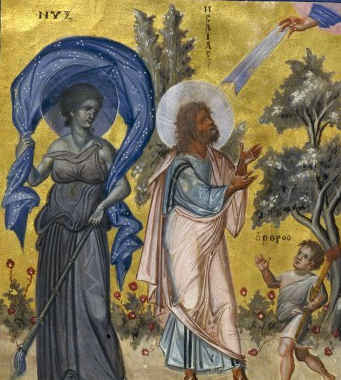I don’t know if P. Sufenas Virius Lupus intended for this prayer to Nox to be able to be sung to the tune of O Holy Night… but it can be.
An excellent and very moving addition to the celebration of Mother Night here.
Thank you so much, PSVL!

I don’t know if P. Sufenas Virius Lupus intended for this prayer to Nox to be able to be sung to the tune of O Holy Night… but it can be.
An excellent and very moving addition to the celebration of Mother Night here.
Thank you so much, PSVL!
A great many new friends have been made. Presentations have been excellent, even challenging. In the hallway I heard someone say “the only thing I hate about this conference is that I feel like I’m stupid. There are so many intelligent people here, making me think.”
Hard things have been discussed. Alliances have been made. Arguments have been hashed out, or tabled, or set aside in favor of attempting to work together. Sure, not everyone is ready for this or getting as much out of it as I have. But the signs are encouraging.
There’s already talk of another. I’ll be there. Will you?
…will I meet you at the Polytheist Leadership Conference this weekend?
Could be fun!
G this week, is for god.
Which god, you ask?
Sabazios (Sabazius in Latin), the Thracian Horseman, comes to mind. There are a number of excellent writings on Himself, and His worship, throughout the ancient Near East in the forms of various horse-riding deities and saints, warriors and serpents. It’s even possible to see His imagery in the common Ptolemaic (and earlier Egyptian) images of Horus spearing a hippo or crocodile from horseback, that eventually morphed into Mari Girgis or Saint George, Egypt’s patron saint.
Today, my Anomalous Thracian brother shared a link to P. Sufenas Virius Lupus’ most recent and most beautiful hymn to the Horseman with me, and I knew that I had to share it with you. For those who don’t link well, I hope that PSVL doesn’t mind if I share it with you here.
Serpent Sabazios
P. Sufenas Virius LupusUpon his horse, he defeats serpents,
horned and hooded, vipers and pythons,
but upon the earth and within it
he is the Serpent Itself.He passes, golden, between the breasts
of the initiates, through their hearts,
and emerges below, whether male or female
or neither, from the region of their sexes.The burrows through the earth he makes
are the trackways to Hades and Tartaros;
the ways he clears through our hearts
are devotion and virtue and good speech.Thracians have known this for centuries;
Bithynians and Phrygians as well,
Karians and Lykians and far-off Scythians,
Keltoi and Galatians, and even the Greeks.Through Meroe of Nubia and Egypt,
the Samothracian isles, and ancient Canaan,
through the marbled streets of Rome
and the forests of Gaul and Germania.From the pristine landscapes of Hyperborea
to the titan-haunted halls of Olympus
the fame of Sabazios as serpent
is older than Chronos and Kairos.His flitting tongue upon ears
is the beginnings of prophecy;
his venom in the veins
is intoxication and madness;his coiling around the finger
is mastery of spear and sword;
his trampling underfoot
is the beginning of liberation.(But is it the hero who tramples him
or is it he who tramples himself?
Only the eyes of a shadow can see it,
can know it with certainty.)Through the breasts of gods, even,
he has wound his serpentine way…
therefore, for him this day
may offerings and praise be gathered!*****
Khaire Sabazie!
Dele Mezenai, Horseman bless, each and every one of you.